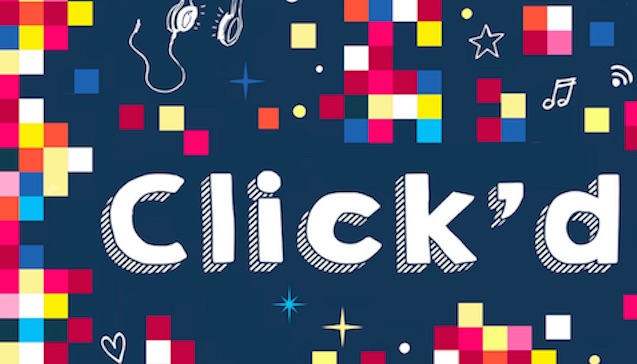Girls, Coding, and the Freedom to Fail: A Guest Post From Click’d Author Tamara Ireland Stone

Click'd
Click'd
Hardcover
$13.59
$16.99
Ask your favorite authors where they get their book ideas, and you’ll probably hear them say something like, “anywhere and everywhere.” That’s certainly true for me. In fact, the idea for my new middle-grade novel, Click’d—a story about a seventh-grade girl coder—came from a rather unlikely place: a garage.
Ask your favorite authors where they get their book ideas, and you’ll probably hear them say something like, “anywhere and everywhere.” That’s certainly true for me. In fact, the idea for my new middle-grade novel, Click’d—a story about a seventh-grade girl coder—came from a rather unlikely place: a garage.
See, that’s where I learned how to build computers.
Back in Silicon Valley in the early ‘80s, my dad worked for a company that assembled some of the first PCs. He often brought his work home with him, and when he did, I got to help (and make a little extra money). The two of us spent hours out in that cold, cluttered garage, where he taught me how to crimp wires, solder them to the motherboard, and then test each connection to be sure it passed quality control.
The work wasn’t easy. My hands hurt after a while. And inevitably, after testing all the parts, some of them would fail. I’d have to take those apart and start all over.
I vividly remember fixing those mistakes with tears of frustration in my eyes. I remember wanting to quit. But my dad would patiently talk me through it. Eventually every part would pass, and the sense of accomplishment would overshadow all those little setbacks along the way.
I’ve been telling that story for years, applauding my dad for teaching his daughter—not only his sons—how to build things in the garage with potentially dangerous tools. But in writing Click’d, I began to realize that I took even more away from that experience than I initially realized.
Click’d is a story about a fiercely-determined girl named Allie Navarro, who creates an app to help people make new friends. She plans to share it with a small group, but then things get out of hand and Click’d takes off, spreading faster than she ever expected.

She gets caught up in the moment. The whole school is playing her game, and for the first time, everyone knows who she is. She feels like a superhero and a rock star all rolled into one. So, when she discovers a glitch that threatens to expose people’s secrets, the last thing she wants to do is shut Click’d down. She wants to fix it quickly and quietly.
At first, Allie tries to hide the error, but that only creates an even bigger issue. She creates a workaround, but that only solves the problem temporarily. She thinks she’s found the mistake in her code, but when she fixes it, she creates a totally new issue.
In other words, Allie fails. She fails a lot in this story.
And that’s one of the things I love about coding; it’s inherently about trial-and-error. By its very nature, coding teaches kids that it’s okay to make a few mistakes before you get it right, and I believe that’s more important than ever, especially for our girls.
According to this recent article in TIME Magazine, girls tend to respond to failure differently than boys. When girls make mistakes, they’re more likely to interpret the setback as a sign that they lack ability, whereas boys tend to attribute failure to external, fixable circumstances. This idea of “stereotype threat” leads girls to believe that they are “bad” at math and science, which can lead to underperformance in STEM-related subjects.
The article goes on to say that, “Rescuing girls from failure makes them lose motivation—even more than boys.”
So, I never rescued Allie. I let her fail. And I let her rescue herself. Because in a world where girls often feel an expectation to be perfect, I want readers to see examples of girls who are allowed—even expected—to fail, and fail spectacularly.
I haven’t built a computer in decades, but those hours in the garage with my dad taught me a lesson I use every day. I’m a writer, and writing and coding have a lot in common. Both are like puzzles; you know what you want to create in the end, but getting there is often a huge challenge, filled with small victories and defeats along the way. Both are all about trial and error. With every novel, I write and delete, and write and delete, and I often feel like I’ll never figure out how to make the story work. With each project, there are multiple times I want to give up. But I don’t.
And I have my dad to thank for that. Because failure was never a “bad” thing. Mistakes were always fixable. I had permission to take chances, to be brave.
Click’d is about a girl coder who falls a lot before she finally flies. If Allie’s story inspires kids to try coding, or dancing, or painting, or playing a new sport—anything they might be afraid of failing—it will have accomplished everything I hoped it would.
Click’d is on B&N bookshelves September 5.
